Do you know how much money your male customers make on average? Are you aware of how many customers use mobile devices to shop online? What about customer interests like gardening or working out? All of these metrics come into play when you’re marketing to customers and trying to understand how, where, and why they buy. It’s all part of completing a customer persona for the collection of people who purchase from you.
What’s a customer persona?
Sometimes referred to as a user profile, the customer persona is essential for understanding how a segment (or all) of your customers live. We’re talking about shopping habits, the technology used, gender, job title, and much more.

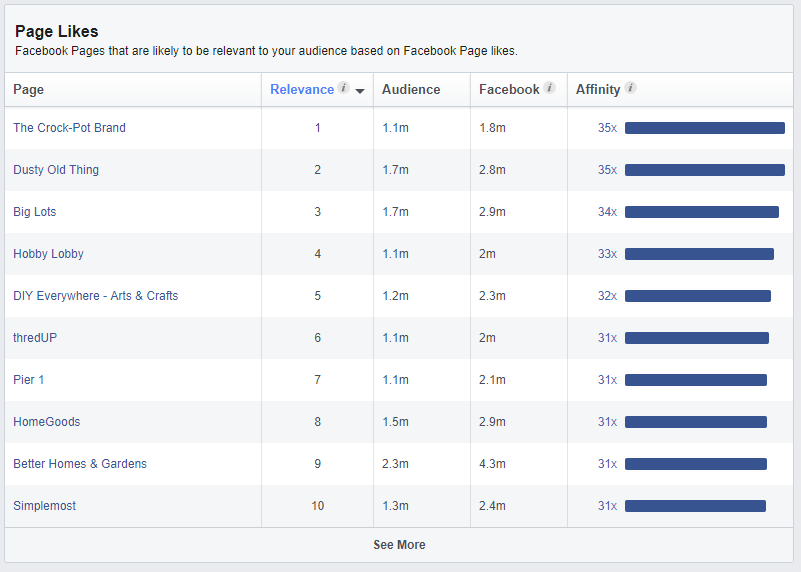
We’ll talk about the most important parts of the customer persona as we walk through the process, but it’s essentially an outline of your average customer. We like to include the following elements in our customer personas:
- Personal information and demographics – Jobs, income, gender, family life, etc.
- Goals and wants – What are they striving for in life? What makes them happy?
- Why you? – What’s the reason your customer buys from your company? What problems are you solving? Also, is there a reason some people don’t purchase from you?
- Form of contact – What’s the best way to reach your customers? Facebook Ads? Email marketing? Social media posts? Mobile or desktop?
Why should your business create customer personas?
A profile of your users or customers serves as a way for you to connect better and actually know about your customers instead of using your gut.
Here are some of the advantages of having a well-researched customer persona:
- You’re able to find out what customers are interested in.
- You learn their pain points.
- It might become clear that you’re communicating to them in the wrong places or formats.
- It provides a better idea as to what types of new products should be developed.
- You begin to understand what type of content is desired on things like blog posts and email newsletters.
- Demographic information will be revealed for better target marketing.
- You may even find out that you’ve been targeting the wrong people all along.
How do you figure out a customer persona
As highlighted in this article on finding your social media audience, there are a few groups you need to research and some different means of completing that research.
First off, we’re interested in making a customer persona for the following:
- Your entire current customer base.
- All potential customers.
Both are equally important, and the information we need can be found with the following:
- Analytics
- Surveys
- Individual conversations
This type of customer persona building typically starts by looking at your analytics. This way, you’re working with hard data and not just potentially skewed answers from surveys and chats with customers. That’s why we’re only focusing on analytics in this article! More specifically, Facebook Insights and Audiences.
What are the blanks you need to fill in for a customer persona?
Not all of these are possible to obtain through analytics, but many of them are. The following items should be included for your customer persona:
- Age
- Gender
- Relationships and family status
- Location
- Their income bracket
- Shopping habits
- Ethnicity
- Profession
- Hobbies
- Political and religious values
You’ll find that some items, like income bracket, can’t be used when marketing in the real estate industry (it’s considered a form of discrimination). Therefore, it becomes more difficult to obtain data like this through analytics from Facebook. However, that’s when you turn to other methods of building customer personas.
Finding a customer persona on Facebook Insights
Luckily for businesses, Facebook profiles include much of the information needed to layout a customer persona.
We all know the drill. You create a Facebook profile, fill in your interests, and type in some of your personal information like your birthday and siblings.
Facebook uses some of these details for advertising purposes, meaning that companies can target based on anything from location to hobbies.
Let’s walk through the process of obtaining this information and putting it into the customer persona for your business.
Step 1: Find audience insights on Facebook
It’s easy to get confused in the Facebook Ads area, and this is one of those times we need to make a clarification.
Facebook Audience and Audience Insights are two different sections of the dashboard. We’ll use both, but it’s important to begin with the Audiences tab.
This area compiles information for advertising purposes.
To find the Audiences page, go to your Facebook account, then open the Ads Manager page.
Click on the drop-down button in the upper left-hand corner.


Choose Audiences under Assets.
Don’t confuse this with Audience Insights. We’ll go to that page later.
Step 2: Make a custom audience in Facebook
After that, you’ll see a few options for finding the users that matter most to your business.
You’ll start with the first two for building your audiences. The last step is simply saving your audiences.
As a brief explanation: You begin by creating a custom audience. This might be based on your email list, Facebook page, or website visits. After that, you generate a “Lookalike” audience, which is not the same, but comparable, and taken from a certain percentage of the area.
Click on the Create Custom Audience button.

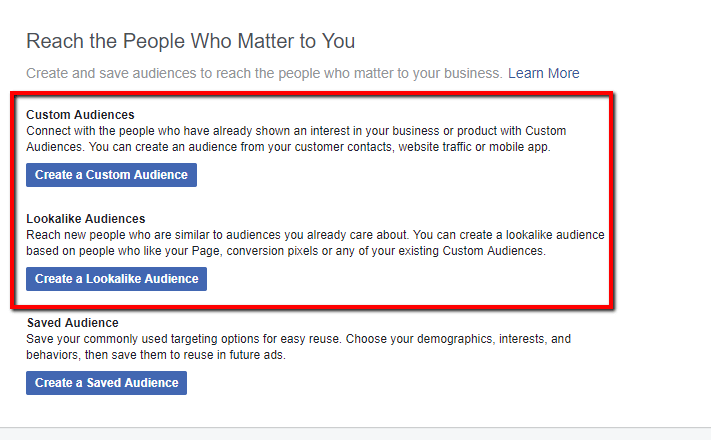
The next page asks you how you would like to create the custom audience. Facebook has been getting much better with targeting, so importing your own current business information is the best way to get accurate audiences.
Some of my favorite audience sources include:
- Customer list file
- Website traffic
- Instagram profiles
- Facebook profiles
- Lead forms
You can select multiple sources, but for this tutorial, I’ll be choosing one of my Facebook pages for simplicity.

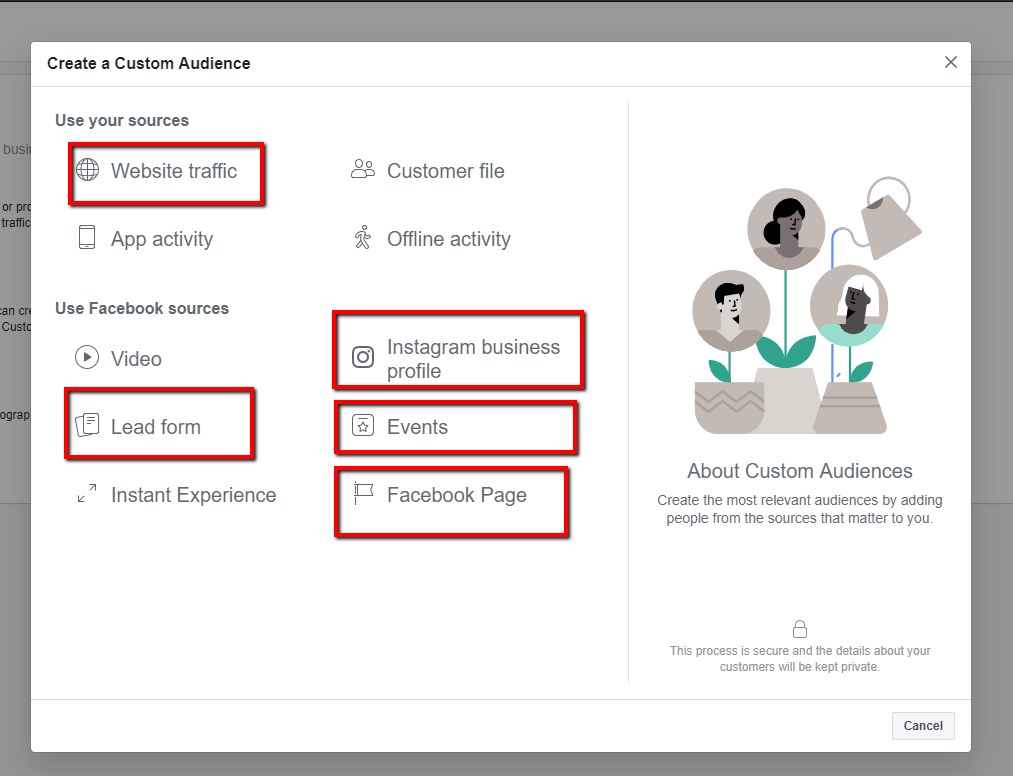
The next page looks different depending on what audience source you chose from the previous step.
For this tutorial, you can see that it wants to know my Facebook page.
Select the page of your choice, along with your criteria. For instance, you could simply create an audience based on page engagement over the past year.
After that, name your audience and click on the Create Audience button.

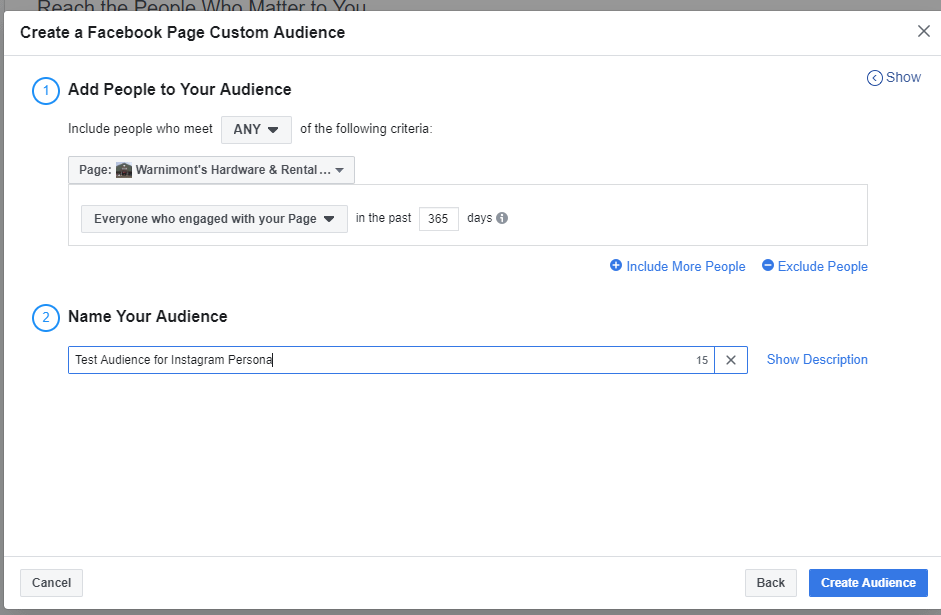
Now, Facebook reveals a list of your audiences. I only have one right now, but you could save dozens of them to reuse and speed up your advertising and research process. If you’d like to view or update an audience, click on its name.
Note: Some audiences are so small that not much information will be pulled for them. Some startups and smaller companies might have limited data from their Facebook pages. The full size of your population could take up to 72 hours to populate. However, most of the time it’s faster.


Step 3: Create a Lookalike audience
We’ve generated the custom audience. Now, click on the Create Audience tab and choose Lookalike Audience.

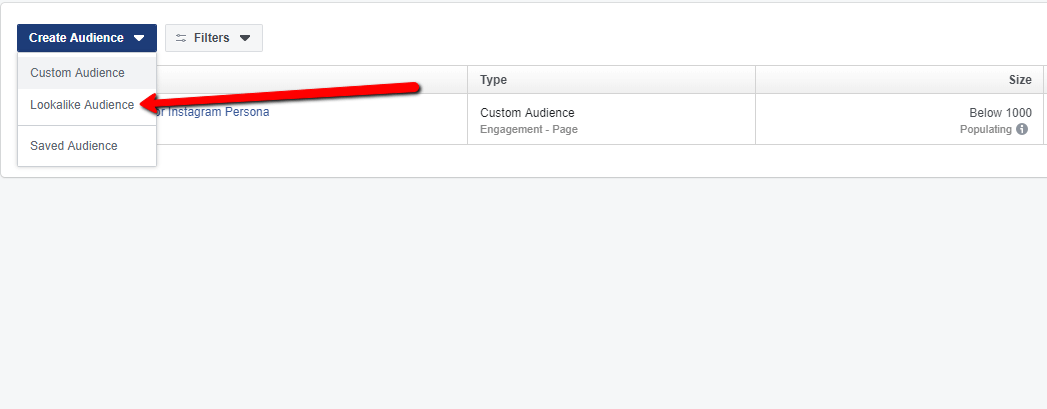
As briefly touched on before, a Lookalike audience is one that’s similar to your custom audience, but with different parts of the population. This allows you to create multiple Lookalikes and potentially tweak them based on different metrics.
Use the dropdown to find your Lookalike source. I located the custom audience I previously created. You also have options to choose other pages and sources.

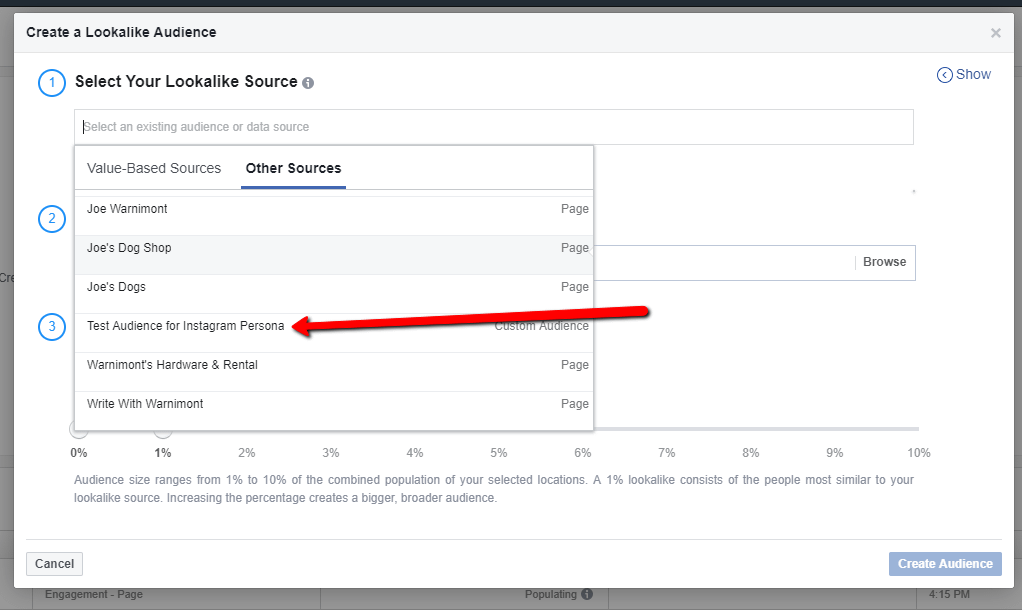
Go down the page to select your audience location. For this test, I’m using the United States.
Finally, you can make your own audience size. I tested out two audiences for this tutorial. The more you move the slider to the right, the broader an audience it becomes. Therefore, I made one audience at 1% of the United States and another at 1% to 10% of the population.
When you’re done with that, click on the Create Audience button.

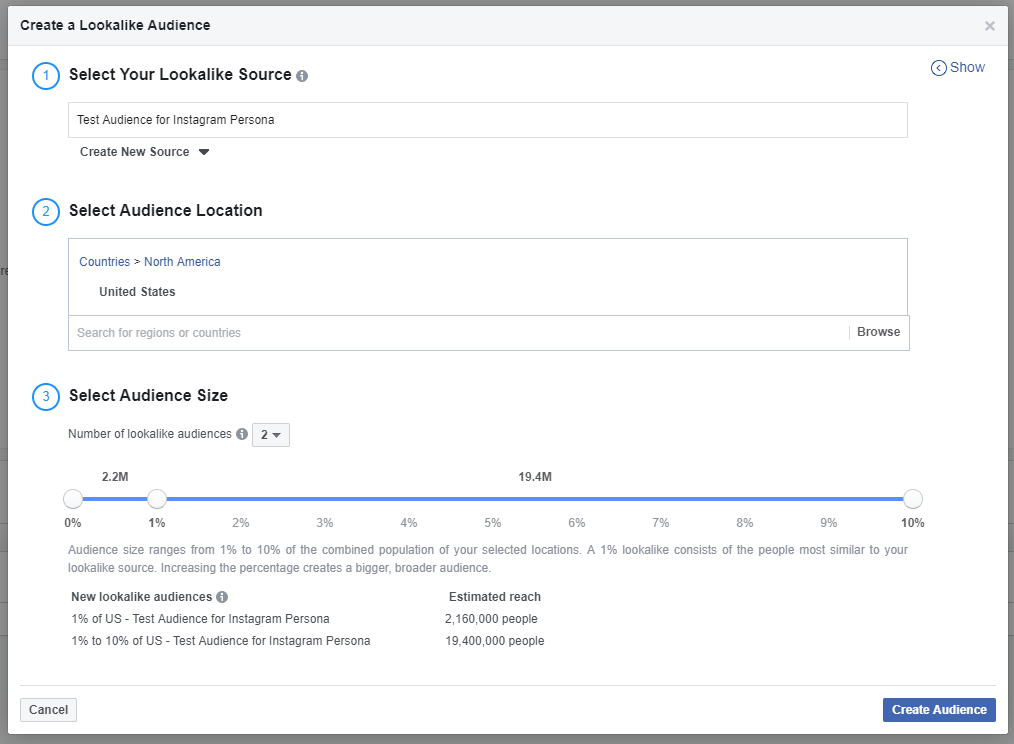
Keep in mind: Facebook recommends more valuable ways to collect information for audiences. For instance, you can use your Facebook Pixel or even product information to get detailed audiences with lifetime customer values. Facebook calls this the “Value-based Sources” and they work rather well if you have the right data sources.

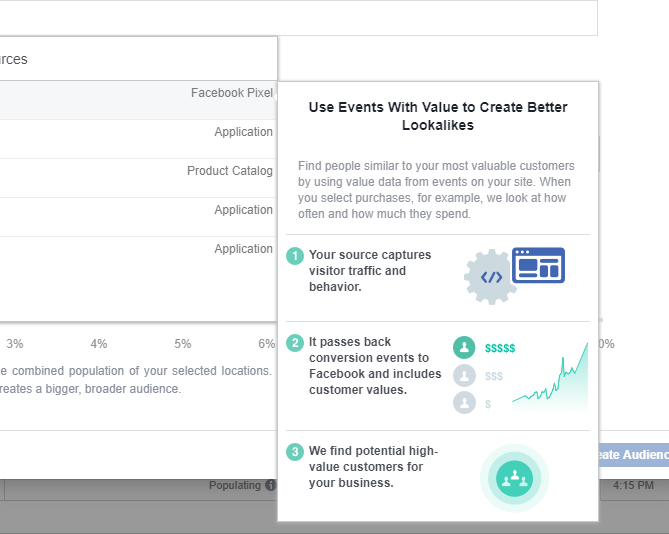
Step 4: View results in Audience Insights
Now it’s time to check the results of our Lookalike audiences. Go to the dropdown module at the top. Open the menu and click on the Audience Insights button.

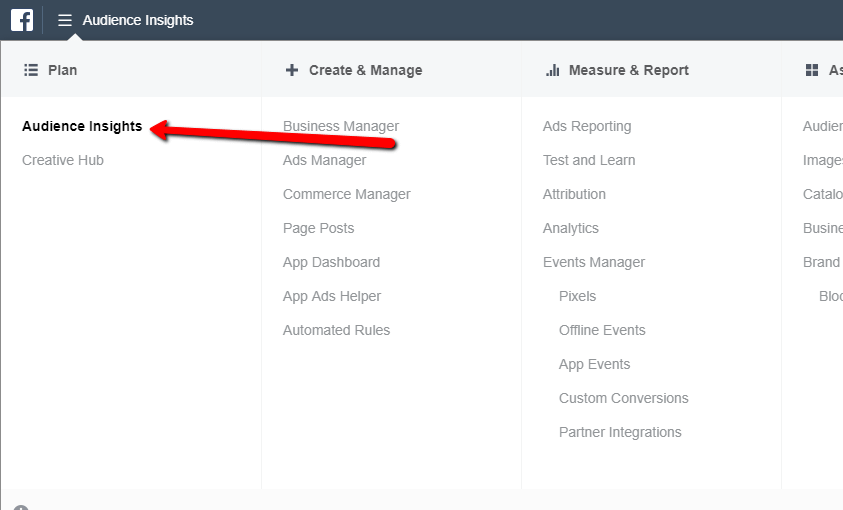
If you don’t see any of your information, go to the Open button to locate the proper Lookalike audience. Remember, it may take some time to populate your audiences.

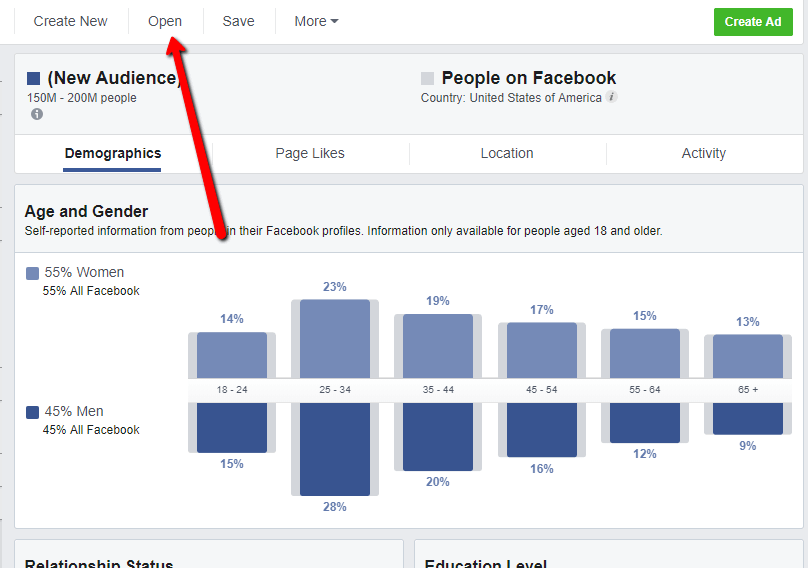
With your Lookalike audience imported, Facebook shows break downs like Demographics–men, women, and relationship status.
Note: All of these graph screenshots have mock data in them.

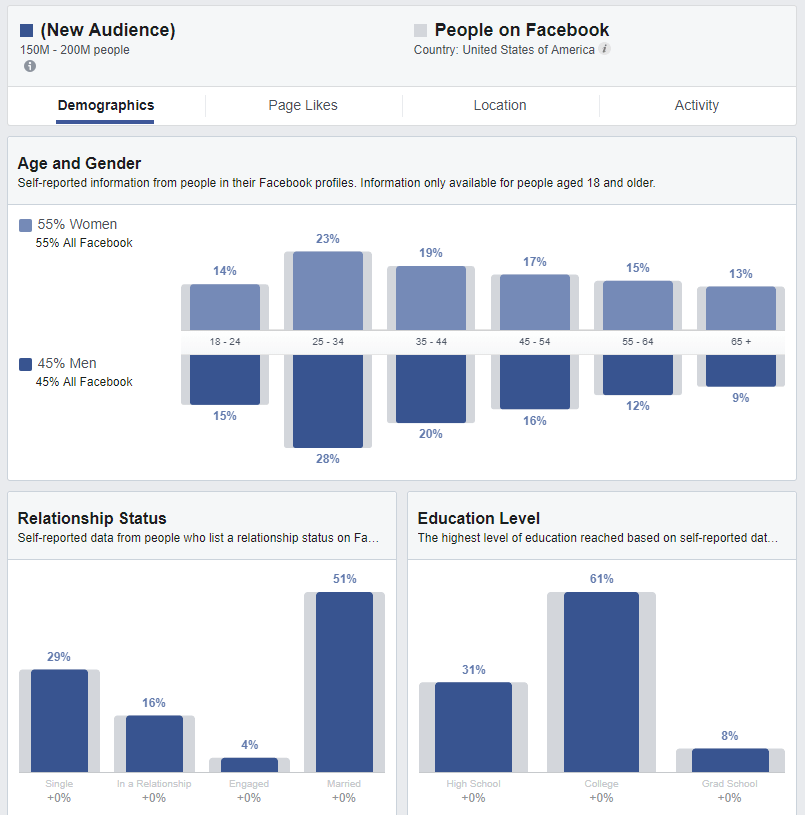
Click on the Page Likes tab to see what types of pages your Lookalike customers are checking out. You can even get the relevance of each brand page to break down exactly where the majority of your customers shop.

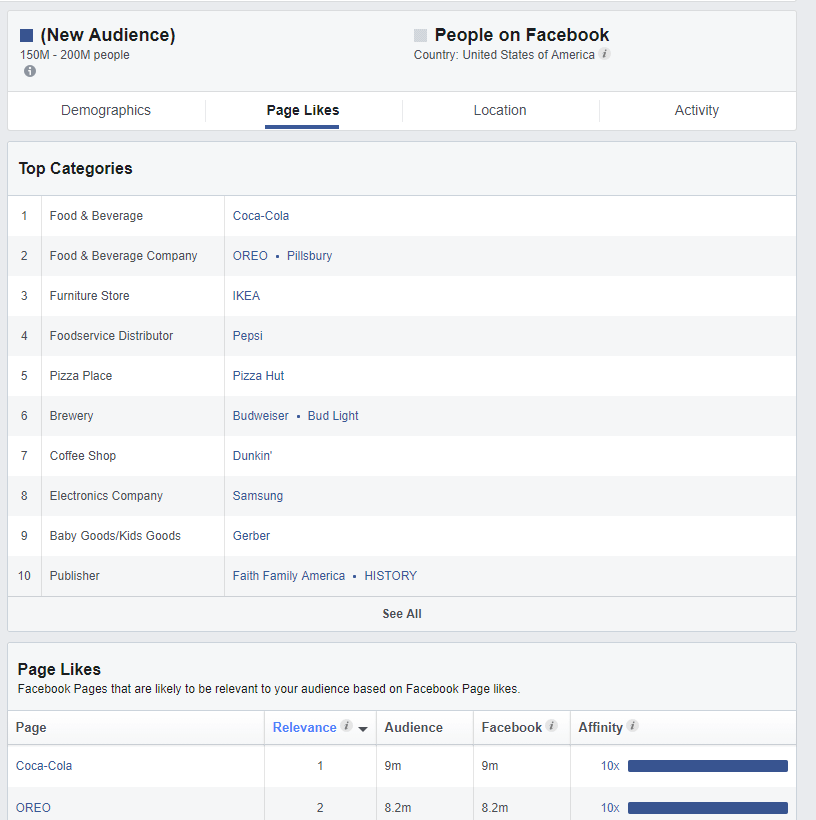
The Location tab is also important for identifying all of the cities, countries, and languages from your mock audience.

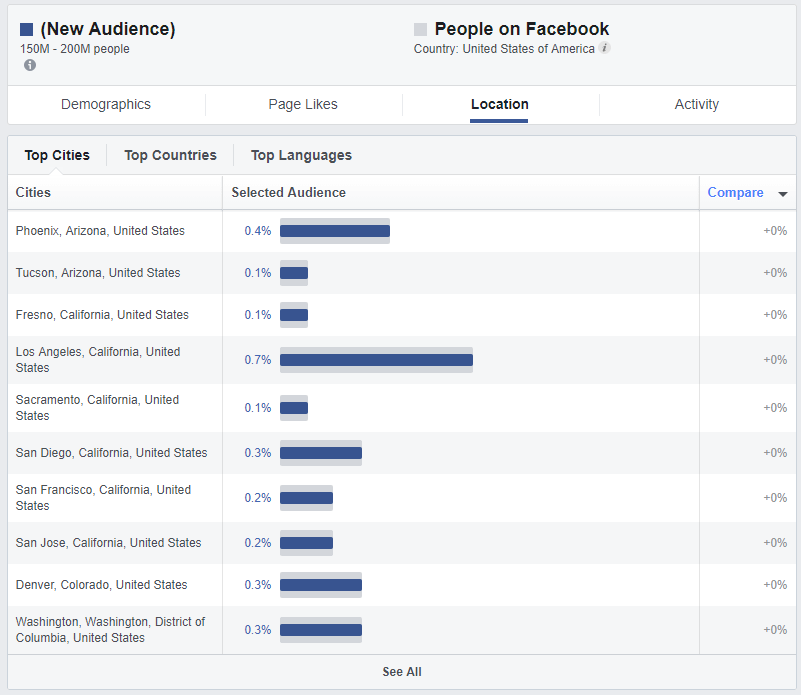
Finally, the Activity tab works great to see if your customer base has a tendency to make comments, like posts, and redeem promotions.

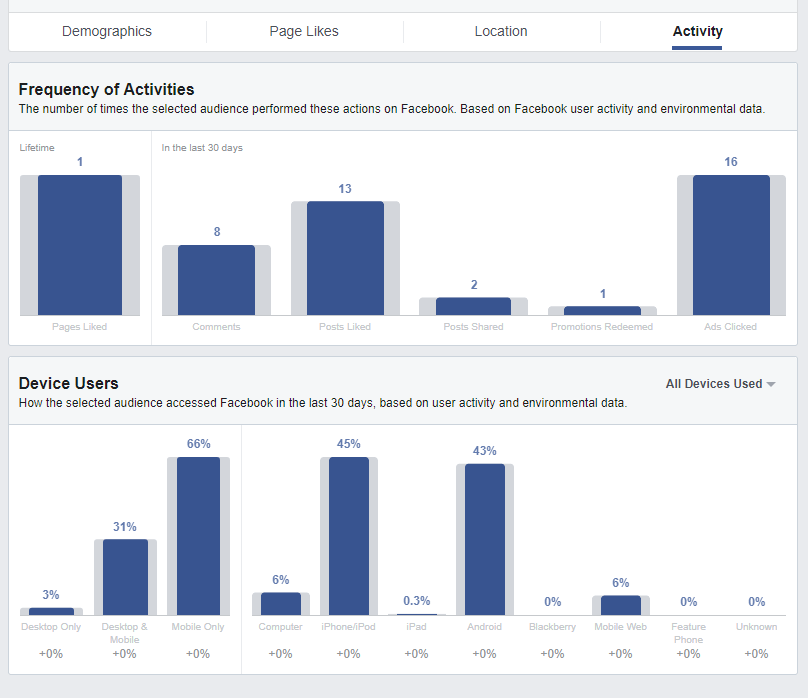
Is the sample too small? Make an audience to the best of your ability
You often don’t get results from Audience Insights if you’re just starting your company or your Facebook follower count isn’t that high.
So, how do you build a customer persona in order to make sound marketing decisions?
Skip the custom audience and go straight to the Audience Insights tool.
For instance, let’s say you want to start learning more about the customers of your fitness drink store. You have an online store and a physical shop. You lack a high enough follower count, but you still want to tinker with making a customer persona.
Start by completing the following:
- Add the advertising location.
- Choose the desired age to target.
- Select gender.
Here’s where it gets interesting. What would you like to find out?
The sky is the limit, but for my experiment, I know that fake bodybuilders currently love my fake sports drinks. So, I want to see what else is common amongst their community.
I typed in “bodybuilding” in the Interests field.

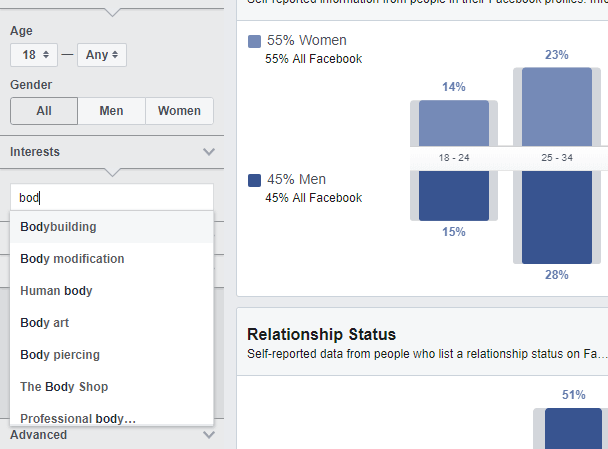
The tool takes a moment to process the information, but whenever you choose a metric the graphs should change.

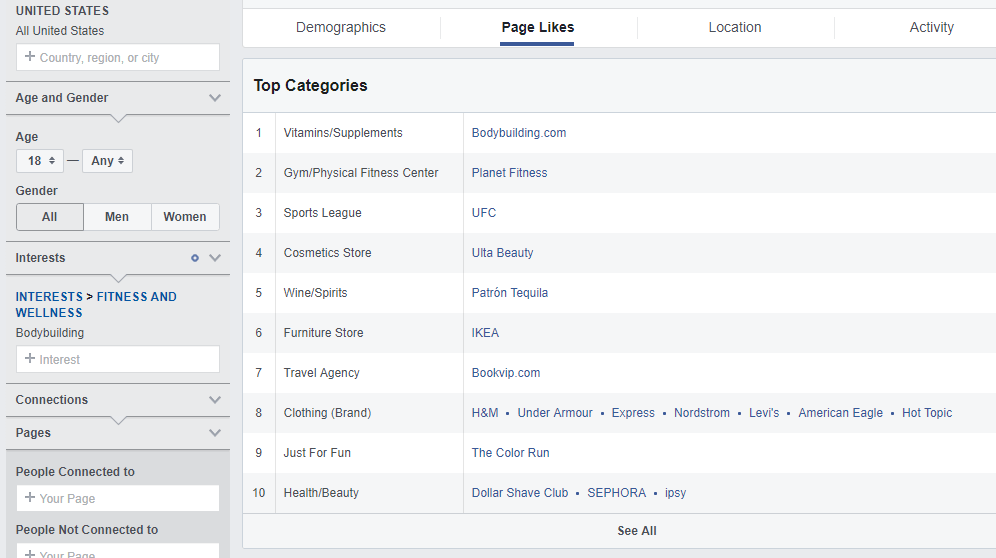
This was a very basic way of digging into customer profiles, but let’s see what we learned about people who like bodybuilding:
- They like following supplement brands on Facebook.
- Planet Fitness is one of the most liked pages by this group.
- Their favorite spirit is Patron Tequila.
- Many live in large cities like Chicago, New York, and Miami.
- 67% of this group only uses mobile for browsing online (probably always at the gym).
- There are actually more women than men on Facebook who have bodybuilding as an interest (at 55% for women).

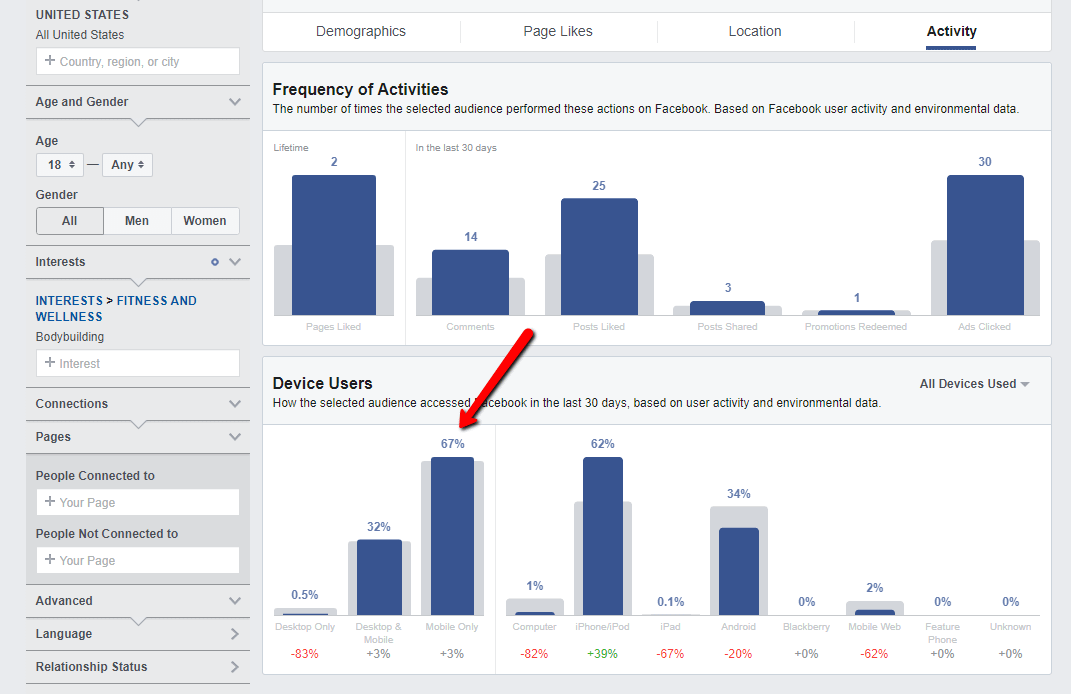
You can definitely make your own conclusions, but these are some things that I’ve decided to ask myself from this information:
- Should we partner with a supplement brand?
- Maybe contact Planet Fitness for a partnership?
- Shall we open a store near a Planet Fitness?
- It seems like marketing should focus on bigger cities and only mobile-friendly ads.
- Is it time to start making my marketing less masculine? Or just target more towards women?
Make your customer persona
Building that ideal customer requires you to take this information found and interpret it into your customer persona.
You’ll encounter many situations where you’re still left to guess, but try to stick to your research and Lookalike data.
A great method for shaping your customer persona can be found here. It outlines essentials like employment, titles, relationship status, and more.
I also want to add to that process, seeing as how Facebook provides us with interests and information on how to reach customers.
Here’s a mock outline of our suggested customer persona:
- Personal information – This area includes everything from gender to income. You can also list jobs, family, and age.
- What your customers desire – What kind of problems do your customers face? What are their goals? How can you help them solve problems and reach goals?
- Why your customers buy your products – Under this header you would write down the reason people buy your products, along with reasons some people might not buy your products.
- How can you reach your customers? – This goes into elements like location, interests, and browser types. You may find that your customers all shop through mobile phones, so maybe it’s better to contact them through an app or SMS.
Most of these metrics can be found in the Audience Insights area of Facebook. You can search for particular interests, or go into the Advanced section for languages in your Lookalike audience, or maybe their professions, education, or relationship status.
What next?
So, you’ve successfully made one, two, or maybe ten audiences and several customer profiles that seem to match segments of your customer list.
But what do you do with this information?
It doesn’t matter if you’re selling tickets online or running an online skateboard shop. Your customer persona can help you with advertising.
Learn how to boost your marketing by creating #CustomerPersonas with insights from #Facebook
Click To Tweet
Facebook would be your first place to advertise since the data actually comes from there. But you also have the opportunity to use this information for a better understanding of your customers overall.
For instance, you might find that many of your customers are married with kids. Does this change your marketing wording, colors, or outlets?
It’s the little things in your customer personas that open up new opportunities for your brand.
If you have any questions about making a customer persona on Facebook, let us know in the comments below.
The post How to Use Facebook to Create a Customer Persona and Build More Effective Marketing Campaigns appeared first on Revive Social.